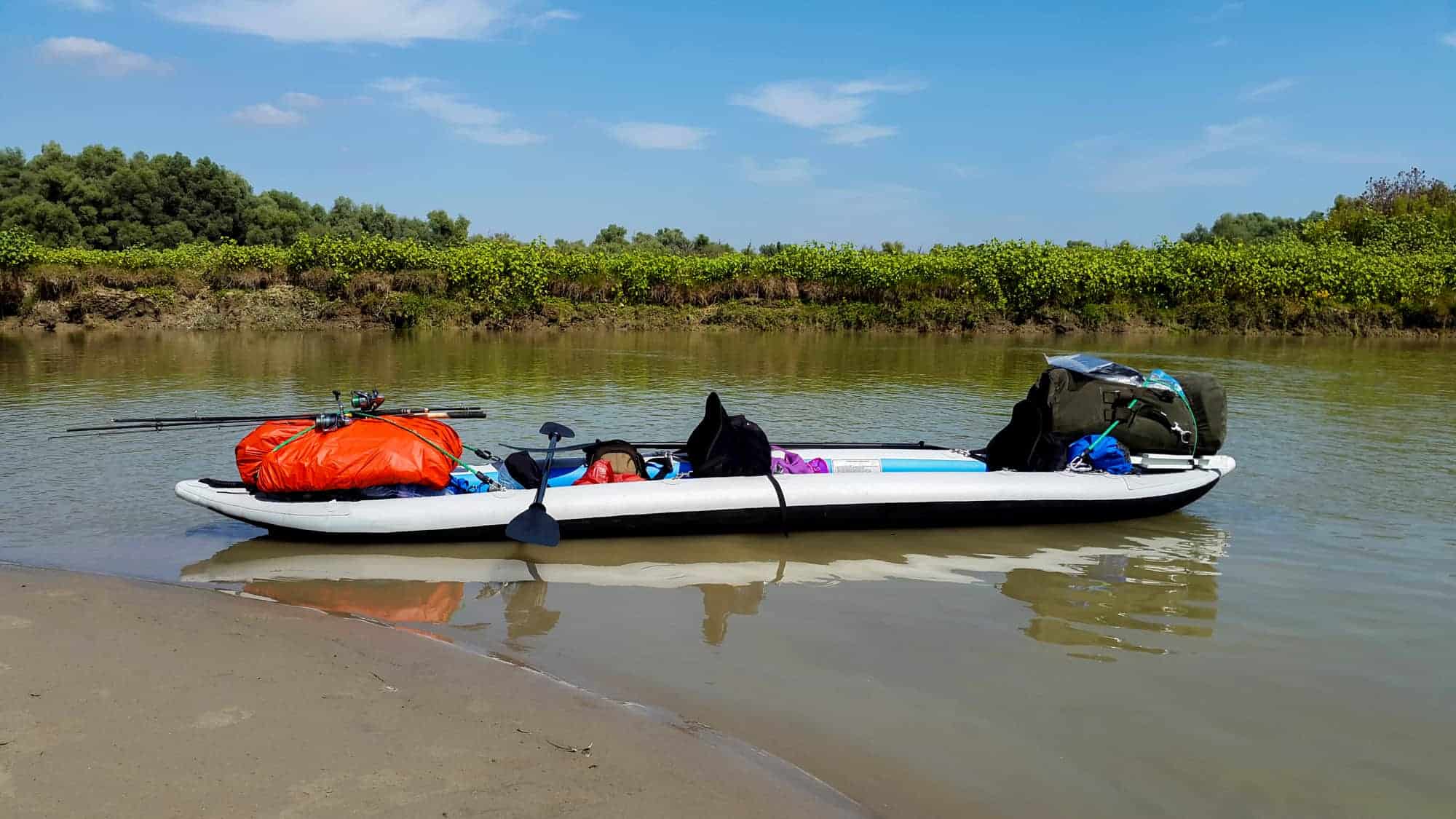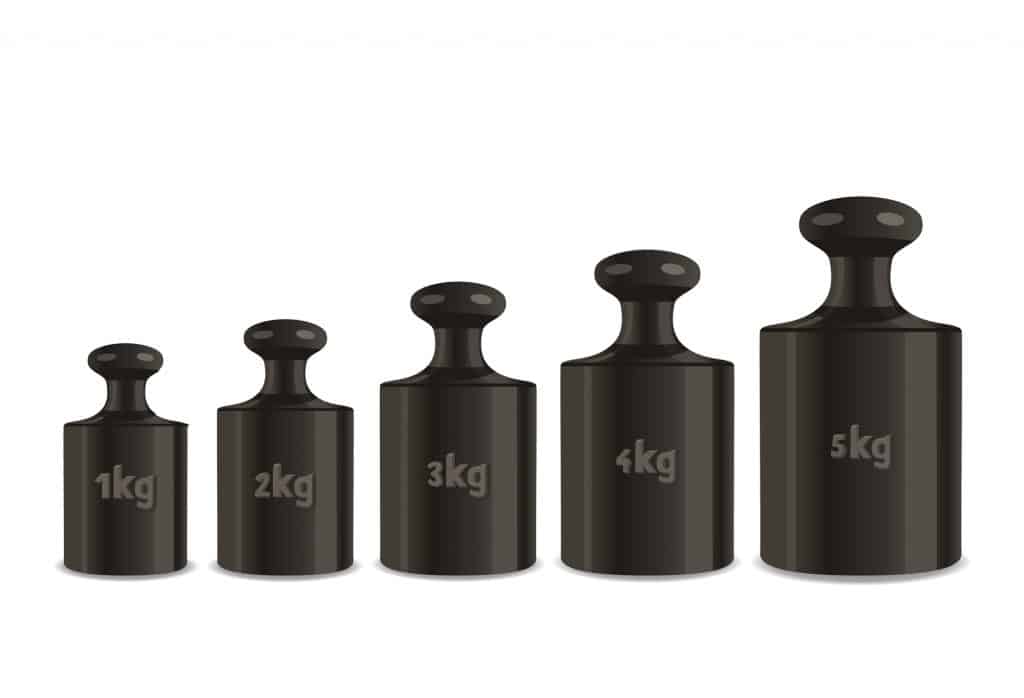If you’re in the market for a kayak, one of the most important considerations is the kayak’s weight limit. Knowing how much weight can a kayak hold is essential for safety, performance, and overall enjoyment on the water.
Kayaks come with manufacturer-specified weight limits, which are crucial to adhere to. Exceeding these limits can lead to decreased stability, compromised handling, and even the risk of capsizing.
The maximum weight limit indicates the total weight a kayak can support without compromising its buoyancy and structural integrity. However, for optimal performance, it’s recommended to stay within the kayak’s performance weight limit, which is typically 70% of the maximum weight limit.
Here’s a quick reference for the average maximum weight capacities of different types of kayaks:
- Recreational Kayak: 250 – 300 pounds
- Fishing Kayak: 400 – 500 pounds
- Touring Kayak: 300 – 400 pounds
- Tandem Kayak: 500 – 600 pounds
- Pedal Kayak: 400 – 450 pounds
- Kids Kayak: 100 – 150 pounds
- Whitewater Kayak: 200 – 250 pounds
- Inflatable Kayak: 300 – 500 pounds
- Foldable Kayak: 200 – 300 pounds
- Sea Kayak: 300 – 350 pounds
To calculate the desired weight limit for your kayak, you can use a simple formula: take the total weight of the paddler plus gear and divide it by 0.7.
For example, a paddler weighing 190 pounds with 20 pounds of gear should look for a kayak with a maximum weight capacity of at least 300 pounds to ensure optimal performance.
In this guide, we’ll investigate:
- The significance of kayak weight limits and how they are determined
- A detailed breakdown of average weight capacities for different kayak types
- How to use the performance weight limit calculation to choose the right kayak
- Tips for managing your load and potentially increasing your kayak’s weight limit
By the end of this article, you’ll have a better understanding of kayak weight limits and how to select a kayak that can safely accommodate you and your gear.
Kayak Weight Limit – Key Takeaways
- Maximum weight limit – A kayak’s weight limit is the maximum amount of weight the kayak can hold without sinking.
- Factor influencing the weight limit of a kayak – The weight limit of a kayak is determined by its length, width, and volume.
- Exceeding a kayak’s weight limit – Overloading your kayak may cause it to capsize, become unstable, and have decreased performance.
- Increasing the limit – There are ways to improve a kayak’s buoyancy, which in turn increases the weight capacity, such as fitting outriggers.
- Performance weight limit – The amount of weight a kayak hold without it negatively affected it’s performance. Calculated by multiplying the maximum weight capacity by 0.7.
- Average weight limit of a kayak – Different types of kayaks have different weight limits, ranging for as low as 100 lbs for youth yaks to 600 lbs for fishing kayaks.
Understanding the Numbers: What Is a Kayak’s Weight Limit?

Kayak weight limit; the chances are you’ve seen this number listed in the kayak’s spec sheet before. Then again, there’s also a pretty good chance that you didn’t pay much attention to it – big mistake, by the way – or didn’t quite understand what it means.
Maximum weight limit, load limit, maximum capacity, weight rating – it goes by many names – but what does it mean? Give me second an I explain!
A kayak’s maximum weight capacity is the rating a manufacturer assigns to their kayaks to indicate how much weight it can hold and stay afloat.
That’s the simplest way to put it.
It’s supposed to help make the process of choosing a suitable kayak easier. But as it turns out, maximum capacity ratings ended up causing a lot of confusion in the paddling community – and among beginners in particular.
However, there are no industry standards regarding how the kayak’s maximum weight capacity is determined. Each kayak brand or manufacturer plays by its own set of rules.
Some of them use a more conservative approach, while others are less cautious. As a result, the weight limit ratings you see of different kayaks can vary significantly – even when those kayaks are of the same size and designed for the same purpose.
More on that later, though.
A kayak’s weight capacity rating isn’t an indicator of the paddler’s body weight.
The maximum capacity load is the combined weight of you, your gear, your paddle, and anything else you’re bringing with you on the kayak.
What Factors Influence A Kayak’s Weight Limit
The good news is that while there are no industry standard for determining a kayak’s weight limit, there are, however, a few factors that do influence the number regardless of which method the manufacturer used
The following three factors influence how much a kayak can hold:
- Length of the hull
- Width or beam of the kayak
- Water displacement volume, as determined by the shape of the hull
The volume of a kayak is calculated based on its length, breadth, and height (thickness).
And volume dictates the weight capacity of a kayak.
What Happens if you Exceed the Weight Limit on a Kayak?

You can never be too light for a kayak, but you (and your gear) can definitely be too heavy. And when that happens, trust me; you’ll know.
But can you load your kayak up to its maximum weight capacity, though?
Well, nothing is preventing you from trying – at least in theory.
Granted, reaching a kayaks weight limit won’t necessarily make your kayak sink the second it hits the water.
But, if you exceed a kayak’s maximum weight capacity limit, it will cause the kayak to;
- Become noticeably harder to paddle
- Track poorly, feel sluggish and unresponsive.
- Take on more water as it sits closer to the water line
- Be in danger of capsizing, especially in rough waters
In short, it won’t be a pleasant or safe paddling experience, to say the least.
Why does this happen?
In a nutshell, if your and your gear’s combined weigh is more than the yak’s maximum weight limit – even by a little – your kayak will sit lower in the water. This creates more drag, lowers stability and increase the likely hood of taking on water- as result, makes kayaking more difficult and hazardous than it need to be.
How Much Weight Does the Average Kayak Hold?

Different types of kayaks have different builds, serve different purposes – and, as a result, have a different kayak weight limit.
If you haven’t noticed by now, the key term here is “different.”
Read on for a few examples;
Weight Capacity Limit of Recreational Kayaks
Recreational kayaks are designed for casual use – flat waters, such as slow-moving rivers and lakes, warm weather, short one-day paddles, fun, and relaxation. You wouldn’t take your recreational ‘yak out for a ride on whitewater rapids or turbulent seas.
Well, at least I hope you wouldn’t.
Anyway, since they’re made for recreational use – hence the name – they aren’t supposed to carry a lot of additional weight. They have the lowest weight limit out of all kayak types.
You likely won’t need much else besides boating essentials, though. So, the somewhat limited maximum weight capacity of 250 to 300 pounds should still work.
Weight Capacity Limit of Touring Kayaks
Touring or expedition kayaks are made with more specific paddling scenarios in mind – long-distance or multi-day trips, often in open waters. It’s the exact opposite of a recreational ‘yak.
And what do you do when you go on a multi-day kayaking tour?
You bring lots of supplies with you, some of which – like cooking supplies, tents, sleeping bags, and outdoor gear – on top of your standard part of kayaking equipment.
So, to accommodate all this, touring kayaks typically feature more onboard storage options and have an average maximum weight capacity of 350 pounds.
Weight Capacity Limit of Sit-On-Top Kayaks
Lazy man’s boat – that’s what sit-on-top kayaks are sometimes jokingly called. They’re wider, more stable, easier to get in and out of, and have self-draining scupper holes that prevent them from taking on extra water weight.
Overall, sit-on-top kayaks are a much better fit for younger paddlers and beginners.
Besides the lack of an enclosed cockpit, another thing that sets them apart from their sit-inside counterparts is weight capacity:
Sit-on-top kayaks tend to have an average weight limit of 350 to 400 pounds – up to 100 pounds higher than the average 300-pound weight limit rating for closed cockpit-style models.
Weight Capacity Limit of Inflatable Kayaks
They might not look the part, but these glorified pool toys – as some kayakers “affectionately” call them – can carry a lot more weight than their hard-shell counterparts.
Think about it:
Inflatables stay afloat by being lightweight, wide, and filled with air; they are pretty much the definition of “buoyant.”
So, you shouldn’t be too surprised to hear that inflatable kayaks have the highest weight capacity out of the bunch. Most inflatables have a weight limit upwards of 400 pounds, with some “advanced” models having a maximum weight capacity of up to 900 pounds – thats a whopping kayak weight limit that’s hard to beat!
What About Tandem Kayaks?
There will be a noticeable difference in maximum weight capacity between a one-person kayak and a tandem kayak; that’s to be expected.
The latter is meant to accommodate two paddlers, after all. Beyond that, tandem kayaking also means double the equipment, double the water bottles, double the snacks, double the – well, everything.
So, how big of a difference are we talking about here?
Because they’re designed for two, tandems are wider and longer than your typical recreational kayaks, often measuring 14 to 18 feet in length. The increase in hull size also means that the average maximum weight limit for a tandem kayak falls somewhere in the neighborhood of 500 to 600 pounds.
Summary Of Average Weight Limit By Type Of Kayak
The maximum weight that a kayak can carry varies based on the design and intended purpose, as seen in the table below:
| Type Of Kayak | Average Weight Capacity |
|---|---|
| Recreational Kayak | 250 – 300 pounds |
| Fishing Kayak | 400 – 500 pounds |
| Touring Kayak | 300 – 400 pounds |
| Tandem Kayak | 500 – 600 pounds |
| Pedal Kayak | 400 – 450 pounds |
| Kids Kayak | 100 – 150 pounds |
| Whitewater Kayak | 200 – 250 pounds |
| Inflatable Kayak | 300 – 500 pounds |
| Foldable Kayak | 200 – 300 pounds |
| Sea Kayak | 300 – 350 pounds |
How to Calculate the Kayak Weight Limit for Optimum Performance Using a Simple Formula

I haven’t had a chance to address how you can determine the right kayak weight limit, even if it’s the most vital piece of info for someone new to kayaking.
Let’s start with the confusing part:
If you weigh 190 pounds and carry 30 pounds of gear, you need a kayak with a practical weight limit of 220 pounds – not one with a 220-pound maximum weight capacity.
A good rule of thumb for optimal on-the-water performance is to max out the load at 30-40% less than the specified maximum weight capacity.
In short, it’s advisable to stay at about 70% of the kayak’s specified maximum capacity; that’s the practical – or performance – weight limits.
You might’ve even noticed that some manufacturers are listing a performance weight limit alongside the weight capacity in their kayaks’ spec sheet.
Maximum Weight Capacity
So, how does this work?
In order to work out the kayak’s target capacity figure, start by determining your total weight requirements.
That includes your body weight, the weight of your equipment, additional passengers – anything that might add heft to your ‘yak on an average paddling trip – and don’t forget the weight of your kayak paddle.
Figure out this number and note it down.
Also, I hope you’re good at math because you’re going to need it for this next part:
Maximum Weight Capacity = Total Load Requirement/0.7
That’s the fastest way to determine the maximum kayak weight limit you should be aiming for – even though you’ll effectively be using only 70% of it.
For example….
A 190 pound person and 30 pounds of gear, 220 pound total. That paddler should be choosing a kayak with at least (220/0.7) a 315 pounds weight capacity
Performance Weight Limit Calculation
If you’re still not sure about your total load requirements, you can use the specified capacity rating to calculate the kayak’s performance weight limit, instead:
Performance Weight Limit = Maximum Weight Capacity x 0.7
Yes that is more math; but it’ll all make sense once you see a real-life example.
Using the performance weight limit calculation from above, we determined that the ideal performance weight capacity for a kayak, with a maximum capacity of 400 pounds, should be around 280 pounds.
To make things a bit simpler, here’s a table that summarizes the performance weight restrictions for various manufacturer stated weight limits:
| Manufactures Weight Limit Of A Kayak | Performance Weight Limit (70%) |
|---|---|
| 200 lbs (91 kg) | 140 lbs (64 kg) |
| 300 lbs (136 kg) | 210 lbs (95 kg) |
| 400 lbs (182 Kg) | 280 lbs (127 kg) |
| 500 lbs (227 kg) | 350 lbs (159 kg) |
| 600 lbs (273 kg) | 420 lbs (191 kg) |
| 700 lbs (318 kg) | 490 lbs (223 kg) |
| 800 lbs (364 kg) | 560 lbs (255 kg) |
| 900 lbs (409 kg) | 630 lbs (318 kg) |
If you are a big guy looking for a kayak with a high weight rating – why not check out our guide of the best kayaks for big guys or girls
Is There a Way to Increase the Kayak’s Weight Limit?
What if you did the math as instructed but gained weight since you first purchased your ‘yak or have to carry more gear than you planned for initially? It’s a scenario no one wants to think about – especially the weight gain part – but it happens.
So, what does this mean for your ‘yak?
Is it done for, or is there a way to increase its weight capacity to accommodate a few extra pounds?
Again, the weight limit for a kayak is determined by the length, width, and volume of the kayak’s hull. So, I hate to be the bearer of bad news, but no, there’s nothing you can do to increase the kayak weight limit as such.
Not all is lost, though:
There’s not much you change about the kayak’s weight capacity per se – but there are ways to improve buoyancy – and in turn increase the maximum capacity.
This buoyancy boost should allow the ‘yak to carry the extra weight and stay afloat – to some degree, anyway – making it seem like its weight limit went up a bit.
- Paddling in the “right waters” – as in staying away from freshwater and paddling in saltwater – is one way to do it. Saltwater provides more buoyancy and could make it easier to stay afloat even with the extra pounds.
- Fitting your kayak with floats and outriggers – this is another way to improve its buoyancy, although, again, this has nothing to do with the actual maximum capacity. You’ll have to sacrifice maneuverability and put up with a lot of extra drag to get that slight buoyancy boost, though.
Final Thoughts on Kayak Weight Capacity

Weight capacity is going to be an essential factor to consider – not only because it affects the kayak’s performance but also because it impacts buoyancy and safety. And I hope that, now that you’re armed with this knowledge, figuring out the right kayak weight capacity won’t be too hard.
And, now you’re more than capable of answering your own question; what size kayak do I need for my weight?
And to be honest, there’s no such thing as too much weight capacity – at least not from the performance standpoint.
The only real reason you might not get a ‘yak with a higher kayak weight limit is cost. On that note, my advice is to do the math and go with the highest kayak weight limit that your budget allows.
That way, you can be certain that your ‘yak will be able to handle your weight and the weight of your equipment and other stuff you might bring on board.
FAQ – Frequently Asked Questions On The Weight Limit Of Kayaks
Is There A Weight Limit For Kayaks?
Yes, kayaks have a weight limit. Kayaks are designed to hold a specific amount of weight, exceeding that limit can negatively influence their performance and buoyancy – putting the kayak at risk of capsizing or sinking.
The maximum weight capacity of a kayak is typically anywhere between 250 and 500 pounds – however its practical load limit is approximately 30% less.
What Is The Highest Weight Limit For A Kayak?
There is no one definitive answer to this question as kayaks come in all shapes and sizes, with different weight capacities. However, as a general rule, inflatable kayaks have a higher weight capacity than hard-shell kayaks.
Inflatable kayaks typically have a weight capacity of between 250 and 900 pounds. Hard-shell kayaks, on the other hand, can have a weight capacity of up to 750 pounds.
A excellent example of this is the Sea Eagle 420x – which has an exceptionally high weight capacity of 855 pounds
Where Should The Heaviest Person Sit In A Kayak?
Its recommendation that the heaviest person should always sit in the back of the kayak.
Even though this is the case, it’s vital to keep in mind that anything non-fixed weight, such as camping gear, cool boxes, and so on, should then be placed toward the middle and bow. This is done to ensure that the total weight is equally dispersed throughout the kayak – to not to negatively impact its handling.
